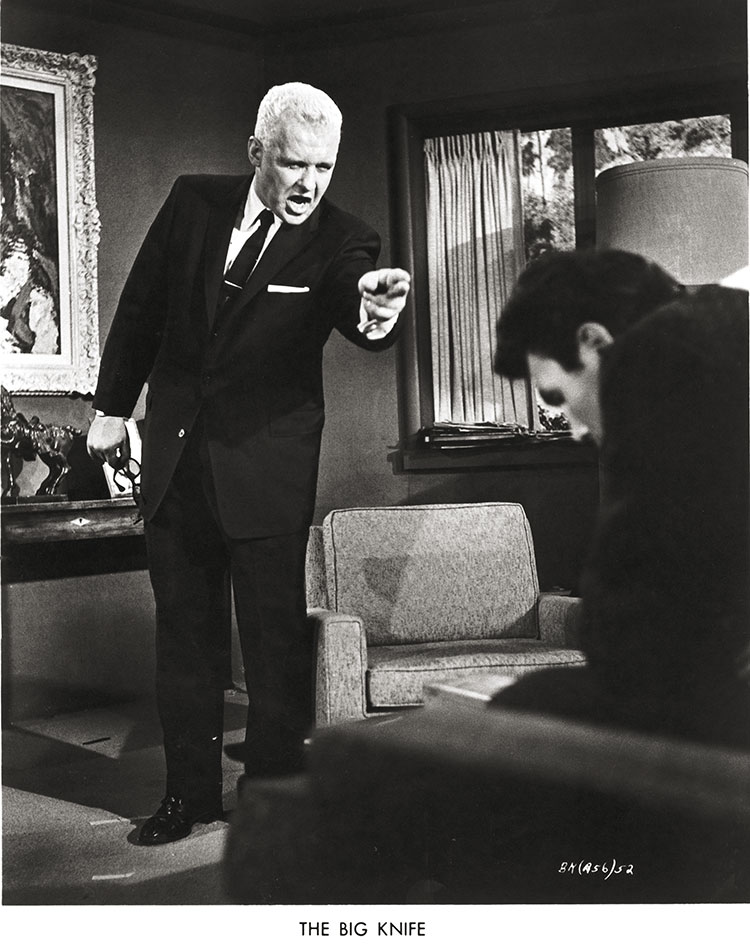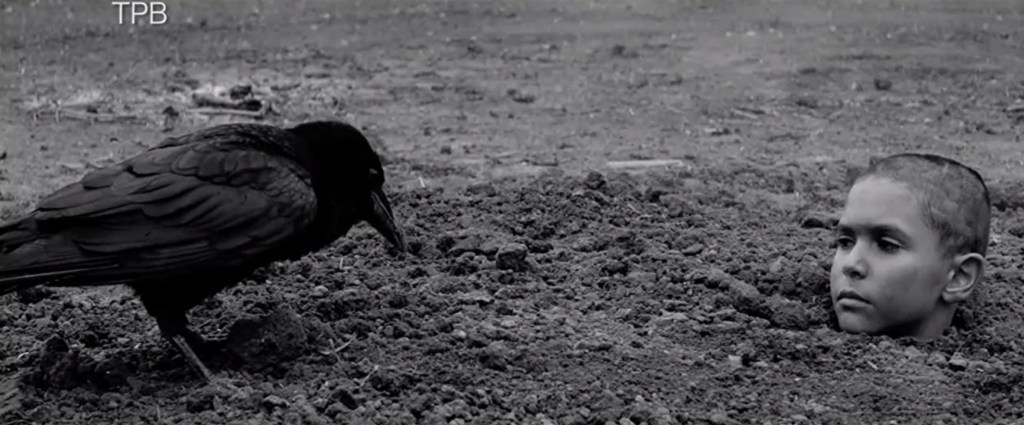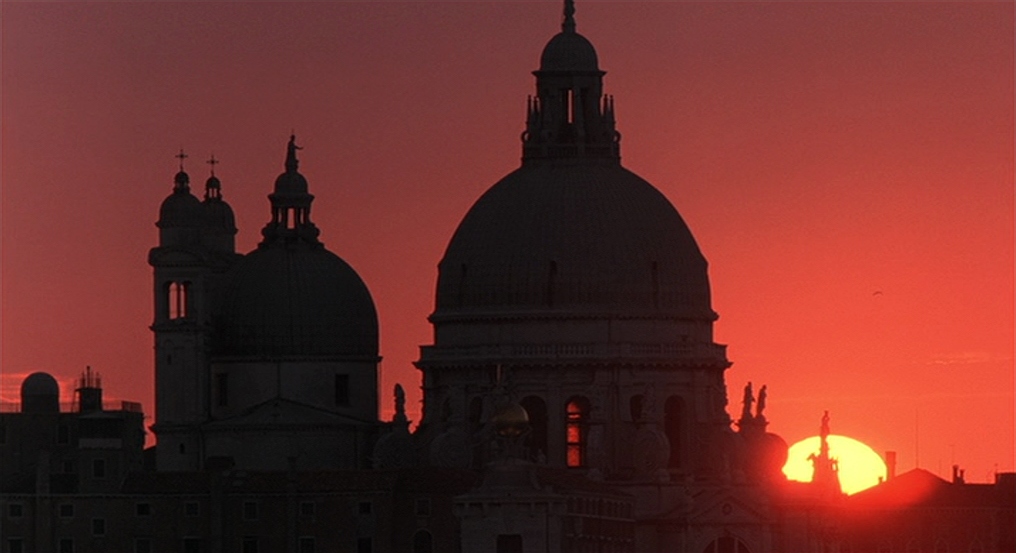Movie Review

Directed by Robert Aldrich, starring Jack Palance, Ida Lupino, and Rod Steiger. Screenplay by James Poe, based on the play by Clifford Odets.
The Big Knife is a movie that defies easy classification. It is billed as a crime picture, a drama, and a film-noir. I would call it more of a melodrama. It is a poison pen piece directed at the cruel and heartless Hollywood system of the time, which, when you think about it, hasn’t really changed by much. At one point the Shelly Winters character says, “I’d rather see a snake than a Hollywood producer.”
The writing is a bit turgid, approaching the Baroque. It is hard to tell where Clifford Odets leaves off and James Poe begins. But I suspect it is Poe, who is doing all the declaiming. Example: “How dare you come in here and throw this mess of naked pigeons in my face.”

Ida Lupino and Jack Palance
It seemed to me to have a strong Homo-erotic undertow. I don’t know, I didn’t see any mention of it in any of the reviews, but it was certainly apparent to me. In the opening scene the Jack Palance character, Charlie Castle, and his personal trainer, Nick, were boxing in the backyard of his plush home in Bel Air. Both were half naked and there was a lot of clinching going on. They were having a lot of fun. Later Nick gives Charlie a rubdown on a massage table in the backyard while Charlie took a meeting with the head of the studio and his henchmen. Lot of sensual rubbing going on. Then, Nick has Charlie turn over on his back and he pours alcohol on his chest and belly and continues to rub. All the while Charlie is talking to others in the scene. Towards the end of the scene, when it looks like Charlie is going to crack from the pressure, Nick sidled up to him from behind and gets very close and says into his ear, “Is there anything a Greek can do for you? Anything at all?”
Throughout the movie all the male characters refer to Charlie as kiddie, darling, and dear. All very strange. And then there is the matter of the Big Knife. What big knife? There’s no knife to be seen in the movie. Obviously, a symbol of something, but what? Usually considered phallic, but there was a lot of backstabbing going on and then there was that last scene. Plenty of heterosexual activity too. Charlie the movie star was something of a player. Every time somebody went up the spiral staircase it was to have sex with someone. Usually Charlie.

Rod Steiger and jack Palance
All the acting was over the top and the actors chewed the scenery plenty. Rod Steiger went nuclear in one scene which probably will go down in the history of cinema as the most explosive ever. The only actor who escaped this phenomenon was Ida Lupino, who was pitch perfect in every scene.
Now, you may have gotten the impression that I didn’t like this film. Not so. I thought it was very entertaining and fascinating to watch. I thoroughly enjoyed it! It is definitely an important part of film history. Highly Recommended.






















